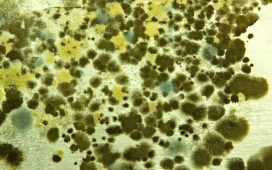The first carcass of a great white, a small female, washed up in South Africa on 9 February 2017. The 2.6-metre-long body had no hook or net marks, ruling out human involvement. Whatever had killed her had vanished. So too had all the other great white sharks in Gansbaai on the Western Cape, Dr Alison Towner noticed.
“We had several sharks acoustically tagged, and later realised three had moved as far as Plettenberg Bay and Algoa Bay, more than 500km [300 miles] east,” says the Rhodes University marine biologist.
It was not until May that sightings of the sharks returned to their peak. Then three more carcasses were found over five days, followed by a fifth in June. For eight eerie weeks, not one great white shark was sighted.
Gansbaai had a population of 800-1,000 great white sharks in the 2010s, but with each killing the bay’s sharks fled for longer and returned in smaller numbers. When a sixth carcass appeared in June 2021, they did not return for another year.
At the time of the first deaths, Towner had only recently started her doctorate on white shark movement, which had now been curtailed. “Witnessing the very predator I’d dedicated my life to studying wash up dead on the beaches was surreal, and something I will never forget,” she says.
Determined to solve the mystery, Towner and her colleagues led necropsies on the four most-recent dead sharks. It quickly became clear that their deaths were connected. All were torn open at the pectoral girdle, just behind the gills, with surgical precision. Two bodies showed distinctive rake marks. Most strikingly, all four were missing their livers.
The signs all pointed to the same culprits: orcas.
Two male orcas that had frequented Gansbaai since 2015 were Towner’s immediate suspects. The names given to them by local zoologists were Port and Starboard, labelled for their distinctive dorsal fins, collapsed to the left and right respectively.
The pair had been spotted off Gansbaai’s coast within hours of each dead shark being discovered. They had also been seen killing sevengill sharks (Notorynchus cepedianus) in nearby False Bay and gorging on their livers.
Towner was certain that Port and Starboard were responsible. “The only element missing was direct observation of an attack,” she says.
On 16 May 2022, Christiaan Stopforth was flying his drone over Mossel Bay, about 190 miles east off Gansbaai, when he recorded something extraordinary: five orcas attacking a three-metre-long white shark, biting between its pectoral fins and ripping out its liver. One of the orcas was Starboard.
Esther Jacobs, founder of the marine conservation charity Keep Fin Alive, and among the first to see Stopforth’s footage, says: “To witness one of the ocean’s top predators defeated so easily was heartbreaking.”
A helicopter crew witnessed three more kills that day. Just as in Gansbaai, the surviving white sharks of Mossel Bay left the area. None returned for 45 days.
Eventually, the following June, Port and Starboard also returned to Mossel Bay. Jacobs was among those who hopped on to a boat to observe them. When they reached the pair, there was the distinct, pungent smell of a shark’s liver in the air, suggesting a recent kill.
Suddenly, a juvenile white shark appeared and Starboard charged at it.
“It was both awe-inspiring and harrowing. Starboard’s immense power was on full display as he gripped the shark firmly, even while it thrashed around,” Jacobs recalls. “We watched in stunned silence as he eventually eviscerated the shark.”
The shark was dead in just two minutes, its liver devoured. Another carcass washed ashore the next morning, bringing the death toll to at least three white sharks.
Today, Mossel Bay’s great white sharks have all but disappeared. “Since the 2023 incident, they haven’t returned in any meaningful way,” says Jacobs. “As far as I know, there have been fewer than 10 confirmed observations in 2024.”
The disappearance of the great whites from the area has also acted as a microcosm of what happens when sharks disappear from food chains. Great white sharks are often deemed “doctors of the ocean”. This is glaringly apparent with their absence in South Africa as populations of their favourite prey, the cape fur seal, and the bronze whaler shark have surged in Gansbaai.
This explosion of prey species could represent what ecologists call a trophic cascade, where the loss of a predator reverberates down the food chain, unbalancing the ecosystem.
Towner notes that the seals, no longer under threat, “became bolder, some even predating on the critically endangered African penguins”. The absence of sharks can also bring disease: since June 2024, seals in the Western Cape have become infected with rabies, an epidemic that reached Mossel Bay in July.
“In my opinion, if white shark populations were at their previous peak, they might have helped mitigate the rabies situation, as rabid seals would likely be easier targets,” says Jacobs.
These damaged ecosystems could be a grim reflection of our oceans’ future; something that goes beyond two orcas. While Port and Starboard provide a dramatic glimpse of how an ecosystem can rapidly change, the far greater extinction threat facing all sharks is humans.
Recent studies by Prof Nicholas Dulvy, at Simon Fraser University in Canada, have concluded that human activities, particularly overfishing, are driving a global extinction of sharks and rays.
“After more than a decade of work, we now know that global abundance has been halved since 1970,” Dulvy says. Overfishing kills more than 100 million sharks a year and more than a third of shark species are threatened with extinction.
Without effective fishing regulations, the ecological damage seen in South Africa could occur on a much larger scale. “The future of sharks looks bleak if overfishing continues,” Jacobs says.
Towner agrees and echoes the recommendations for shark conservation in Dulvy’s reports: “Strengthening international policies to combat overfishing, expanding marine protected areas and promoting sustainable fishing practices are key actions.
“That is, of course, if science is listened to,” she adds.











